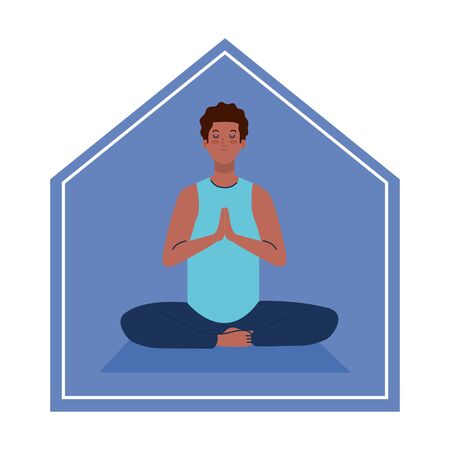Introduction: The Sacred Journey of Motherhood in India
In India, the journey of motherhood is not only a biological process but a sacred transition deeply woven into the fabric of family and spiritual life. Childbirth and the weeks that follow are revered as transformative, both for the mother and her newborn. Across generations, Indian families have celebrated this phase with unique rituals, age-old wisdom, and community support. Traditionally, this period—often referred to as jaapa or jaach ki dekhbhal—is marked by special care practices designed to nurture the mother’s body, mind, and spirit. Yoga and meditation, which have their origins in ancient Indian philosophy, form an essential part of these postnatal customs. These practices are believed to restore balance, promote healing, and help new mothers navigate the emotional and physical changes that accompany childbirth. Drawing from my own experience as a mother in India, I have felt how the gentle embrace of yoga and mindful meditation can be both grounding and uplifting during this profound stage of life. In this article, we explore how postnatal yoga and meditation continue to hold immense value for Indian mothers today, blending tradition with modern well-being.
2. Traditional Indian Postnatal Practices and Modern Yoga
As an Indian mother, my postpartum journey was deeply influenced by both our age-old traditions and the increasing popularity of modern postnatal yoga and meditation. In Indian culture, the period after childbirth, known as “Sutika Kala” or “Jaapa,” is marked by a strong focus on the mothers recovery through specific rituals. For generations, these practices—such as daily oil massages, a nourishing diet rich in ghee and spices, and a period of confinement—have helped mothers regain strength and balance. Today, many urban mothers like me are exploring how these treasured customs can blend seamlessly with contemporary yoga and meditation to promote holistic well-being. Below is a table that highlights the synergy between traditional Indian postnatal practices and their integration with modern yoga techniques:
Traditional Practice |
Purpose |
Modern Yoga Integration |
|---|---|---|
Postnatal Massage (Abhyanga) |
Improves circulation, reduces muscle tension, aids relaxation | Gentle stretching and restorative yoga enhance body awareness and relaxation post-massage |
Nourishing Diet (Laddu, Panjiri) |
Boosts immunity, supports lactation, aids digestion | Mindful eating practices from yoga philosophy encourage gratitude and conscious nourishment |
Confinement Period (Jaapa) |
Allows rest, limits exposure to infections, emotional bonding with baby | Meditation and pranayama provide mental peace and help manage isolation during confinement |
Herbal Baths & Fumigation (Dhoopan) |
Cleanses body, promotes healing, wards off negativity | Aromatherapy during meditation sessions creates a calming environment for mother and child |
This unique blend allows us to honour our heritage while taking advantage of scientific advances in postnatal care. By embracing both worlds, mothers experience the comfort of tradition along with the healing power of yoga and mindfulness. As I practiced gentle asanas guided by my local yoga teacher, I felt a connection not just to my own body but also to countless Indian women before me who nurtured themselves in similar ways—reminding me that postnatal care in India is both timeless and ever-evolving.

3. Physical Benefits of Postnatal Yoga for Indian Mothers
From my own experience, the physical changes after childbirth can be quite overwhelming. Many Indian mothers, like myself, face issues such as persistent back pain, fatigue from sleepless nights, and a general sense of weakness in the body. This is where postnatal yoga has truly been a blessing. Practising gentle asanas and stretches not only aids the recovery process but also gradually strengthens core muscles that were weakened during pregnancy and delivery. Regular yoga sessions helped me regain my flexibility, making it easier to manage daily household chores and baby care with less discomfort.
One of the common struggles I’ve heard from other Indian mothers is lower back pain, especially due to traditional practices like sitting on the floor for feeding or caring for the newborn. Through targeted yoga poses such as Bhujangasana (Cobra Pose) and Marjariasana (Cat-Cow Pose), I experienced significant relief in my back and shoulders. These poses gently stretch and strengthen the spine, which is vital for our day-to-day activities.
Fatigue is another concern that we cannot ignore, particularly with the expectations placed upon new mothers in Indian families to resume normal duties soon after delivery. Incorporating pranayama (breathing exercises) into my daily routine gave me an energy boost and improved my stamina. Deep breathing techniques, like Anulom Vilom, helped calm my mind while also enhancing oxygen flow throughout my body—making a noticeable difference in how energetic I felt each day.
Flexibility is equally important. Traditional Indian practices often require us to sit cross-legged or squat, whether during pooja or when interacting with elders. Yoga helped me restore flexibility in my hips and legs so I could comfortably participate in these rituals without strain. Simple stretches like Supta Baddha Konasana (Reclining Bound Angle Pose) became part of my self-care toolkit.
In summary, postnatal yoga addresses many of the physical challenges faced by Indian mothers after childbirth: it helps relieve back pain, reduces fatigue, improves strength and flexibility, and supports our unique cultural routines. It’s more than just exercise—it’s a holistic approach to postpartum recovery rooted in our own traditions.
4. Mental and Emotional Wellbeing through Meditation
In the Indian context, where extended families often live together and traditions are deeply rooted, new mothers face unique emotional challenges after childbirth. Mindfulness and meditation, which have their origins in ancient Indian practices, play a vital role in nurturing mental health during this transformative phase. Many Indian women experience postpartum blues due to hormonal changes, societal expectations, and the pressure of balancing modern life with traditional responsibilities. Engaging in meditation helps mothers regulate their emotions, reduce anxiety, and foster a sense of calm amidst family dynamics.
The Role of Meditation in Indian Households
Meditation is not just a personal practice; it is often woven into the fabric of daily routines in Indian homes. Early morning or evening meditation sessions, sometimes led by elders or through spiritual groups, can provide mothers with much-needed moments of self-care. This collective approach helps break the isolation new mothers might feel and encourages open conversations about emotional struggles.
Benefits of Mindfulness Practices for New Mothers
| Aspect | Challenge Faced | How Meditation Helps |
|---|---|---|
| Emotional Swings | Mood fluctuations and irritability | Promotes self-awareness and emotional regulation |
| Postpartum Blues | Sadness and low energy post-delivery | Releases stress hormones and uplifts mood |
| Family Expectations | Pressure to meet traditional roles | Builds resilience and acceptance through mindfulness |
| Lack of Sleep | Disturbed sleep patterns due to infant care | Encourages relaxation and improves sleep quality |
| Anxiety about Motherhood | Doubts about parenting abilities | Cultivates confidence and reduces overthinking |
Cultural Acceptance and Support Systems
Indian families traditionally support postnatal mothers through rituals like Jaapa or Sutak, offering time for rest and recovery. Adding meditation to these customs enhances both physical recovery and emotional healing. When family members participate or encourage meditation, it removes stigma around mental health discussions, allowing mothers to express feelings without judgment. In my own experience as a new mother in an Indian joint family, guided meditations provided by community elders became moments of grounding that helped me navigate postpartum stress more gracefully.
5. Family Involvement and Social Support
As an Indian mother, I have come to deeply appreciate the unique strength of our family system, especially during the postnatal period. The support from my saas (mother-in-law), nanad (sister-in-law), and maa (my own mother) has been invaluable in my journey towards recovery. In India, the extended family plays a crucial role in caring for a new mother and her baby, which is quite different from many Western cultures where nuclear families are more common.
The Role of Extended Family in Postnatal Care
Traditionally, Indian families rally around new mothers, ensuring she is not alone on her path to physical and emotional healing. My saas would often remind me to rest while she took care of household chores or looked after my older child. My maa prepared nutritious postnatal meals rich with ghee, ajwain, and other healing spices, following time-tested recipes passed down through generations. This collective care truly made me feel cherished and supported.
Yoga and Meditation as Shared Experiences
In recent years, group yoga or meditation sessions have become increasingly popular among Indian families. Practicing gentle asanas or guided pranayama together—whether with your saas or nanad—not only helps in physical recovery but also fosters stronger emotional bonds. During my own postnatal days, joining a small family circle for morning meditation brought us closer; we laughed, sometimes cried, and most importantly, healed together. These shared moments created a sense of unity and understanding that went beyond words.
Holistic Recovery through Community
The Indian approach to postnatal wellness is holistic. It recognizes that a mother’s recovery is not just about her body but her mind and spirit as well. When the entire family participates in postnatal yoga or meditation sessions—even if it’s simply practicing deep breathing together—it sends a powerful message: “You are not alone.” The encouragement from elders like my saas or the companionship of my nanad made each session meaningful and enjoyable, transforming what could have been an isolating period into one of connection and mutual growth.
In essence, the traditional Indian family system provides an inbuilt network of social support for new mothers. By combining these age-old values with modern practices like group yoga and meditation, we create an environment where mothers can recover holistically—physically, mentally, and emotionally—while strengthening the bonds that make our families so special.
6. Adapting Postnatal Yoga for Indian Lifestyles
As an Indian mother juggling multiple roles, I understand how challenging it can be to carve out time for postnatal yoga and meditation. Our daily routines often revolve around caring for the baby, managing household chores, and meeting the expectations of our extended families. However, integrating yoga and mindfulness into this vibrant tapestry of responsibilities is not only possible—it’s truly beneficial.
Embracing Flexible Timings
Unlike structured yoga classes, home practice allows you to be flexible. I found that early mornings, before the household fully wakes up, or late evenings after everyone has settled down, offer quiet moments ideal for short yoga sessions or guided meditation. Even ten minutes on the mat can make a huge difference to your physical recovery and mental clarity.
Including Family Members
Indian families are known for their supportive structure. In my experience, involving elders or even older children in simple breathing exercises not only fosters bonding but also encourages a culture of wellness at home. Sometimes, my mother-in-law joins me for gentle stretches, turning it into a cherished family ritual rather than a solitary task.
Making Use of Available Space
You don’t need a fancy studio or expensive props; a clean corner in your living room is enough. Spread a mat near your baby’s cradle or in front of your puja space, making the environment peaceful and familiar.
Short Practices for Busy Days
On days when time is scarce—especially during festivals or family gatherings—I opt for micro-practices: five minutes of pranayama while rocking my baby or mindful breathing during cooking. These small moments accumulate, offering sustained benefits without overwhelming your routine.
Seeking Support from Your Circle
If you have help at home—be it from your mother, sister, or domestic staff—don’t hesitate to ask them to watch over your baby for a short while as you focus on self-care. Remember, nurturing yourself empowers you to better care for your family.
Adapting postnatal yoga and meditation into our Indian lifestyle isn’t about rigid schedules or perfection. It’s about weaving self-care gently into our unique rhythms—respecting traditions, valuing family support, and finding joy in every mindful breath along the way.
7. Conclusion: Embracing Wellness with Indian Wisdom
As mothers, our journey after childbirth is both beautiful and challenging. Drawing from my own experience as a new mother in India, I have witnessed how postnatal yoga and meditation can truly transform this delicate phase of life. Our ancient traditions offer us a wealth of knowledge, from simple breathing techniques to restorative asanas, which nurture not only the body but also the mind and spirit. Today, many Indian mothers blend these time-tested practices with modern healthcare advice, creating a balanced approach that suits our unique cultural needs and busy lifestyles. Whether guided by an experienced yoga teacher at the local community centre or following online sessions tailored for Indian women, embracing postnatal yoga and meditation helps us heal faster, build emotional resilience, and foster deeper bonds with our babies. I encourage every mother to explore these practices—let us honour our heritage while adapting to the present. By weaving together tradition and modernity, we gift ourselves lifelong wellbeing, setting a strong example for our children and future generations. May this path of wellness enrich your motherhood journey as it has enriched mine.

